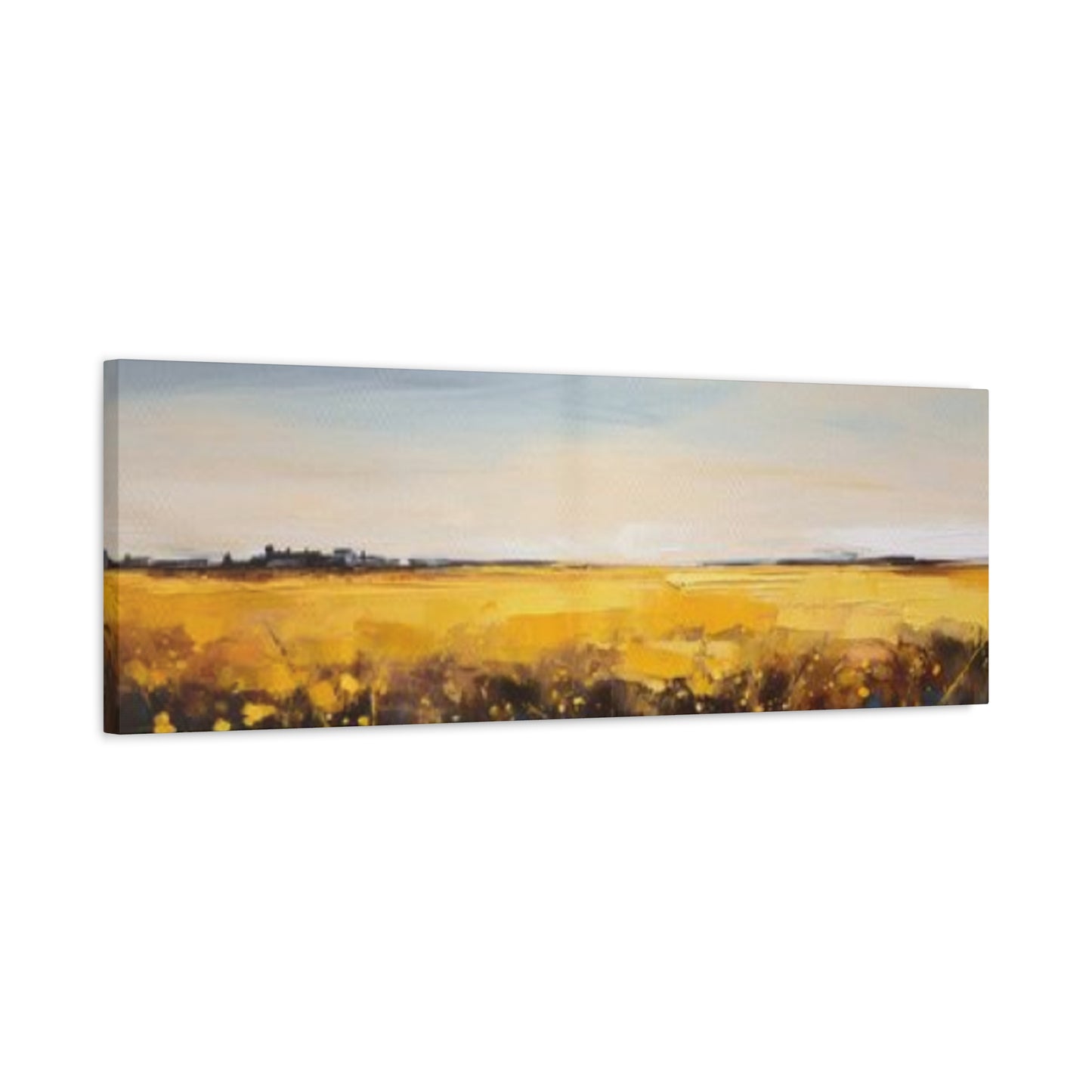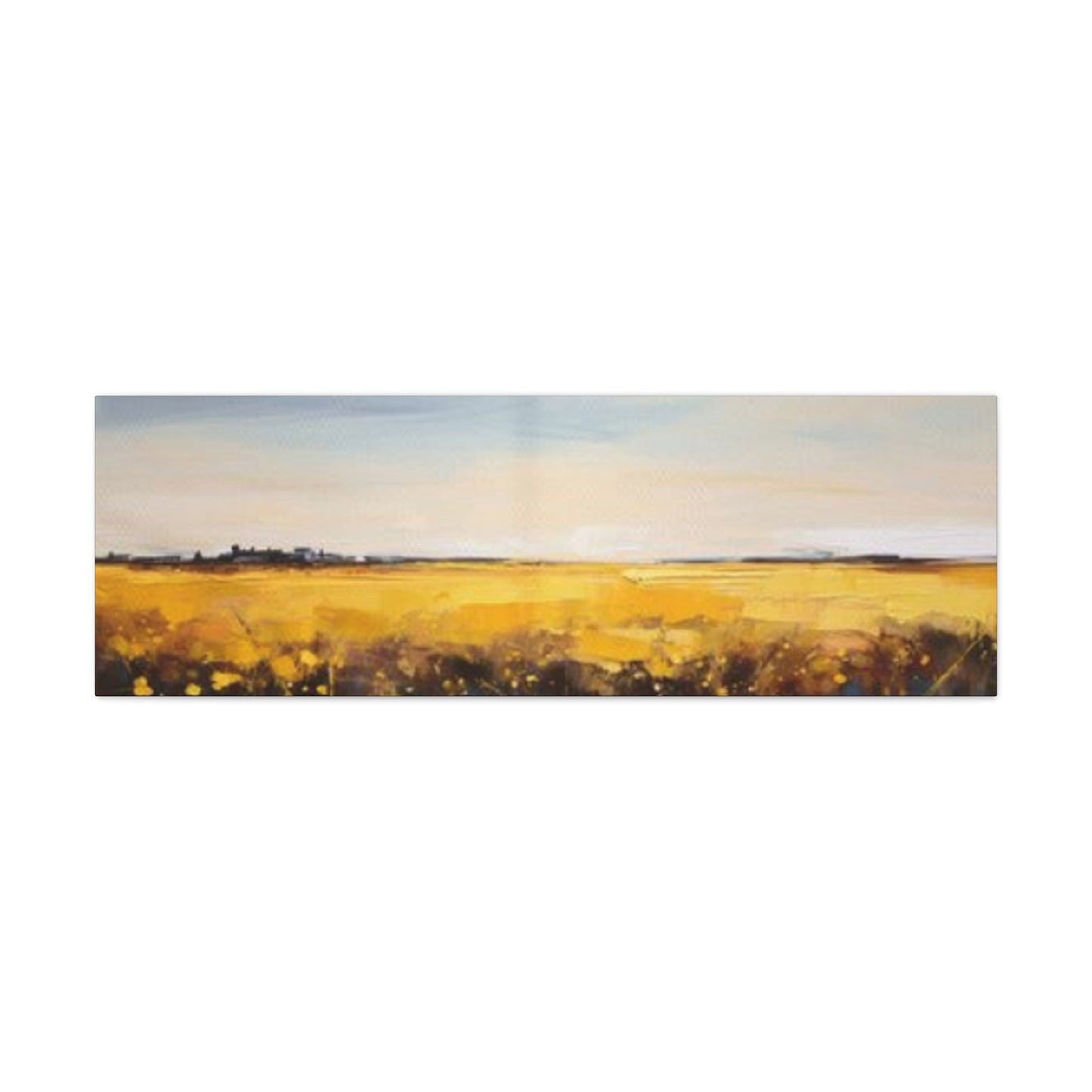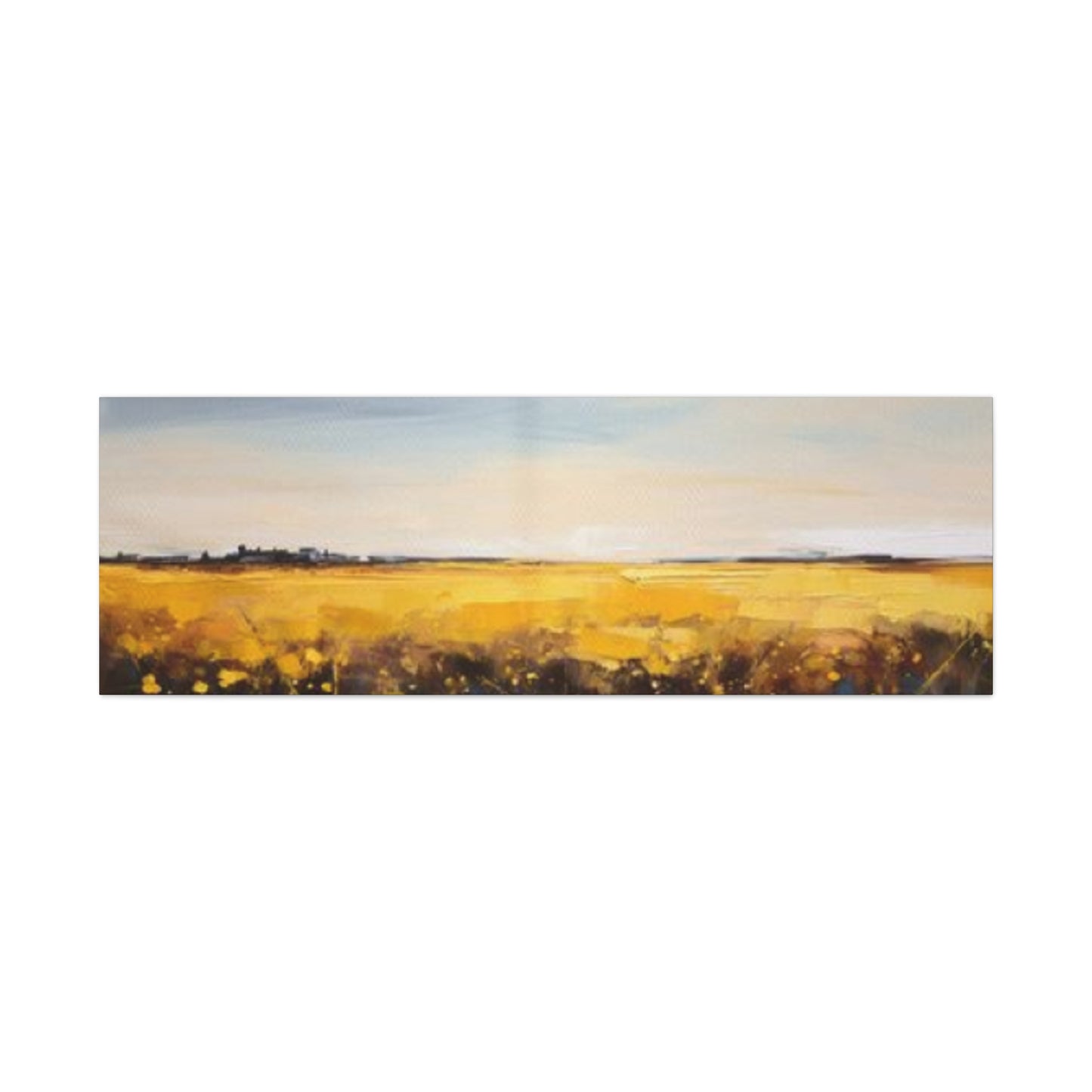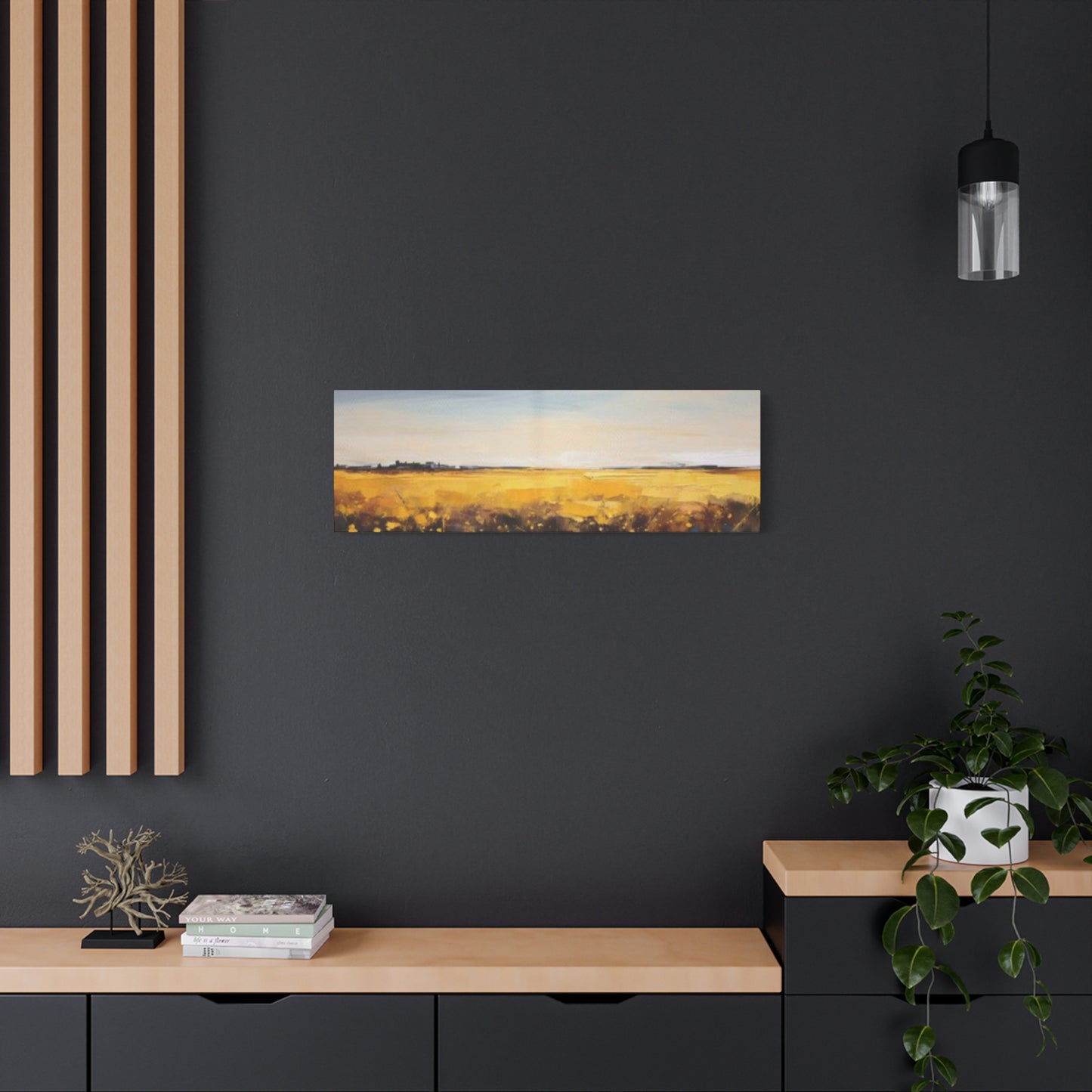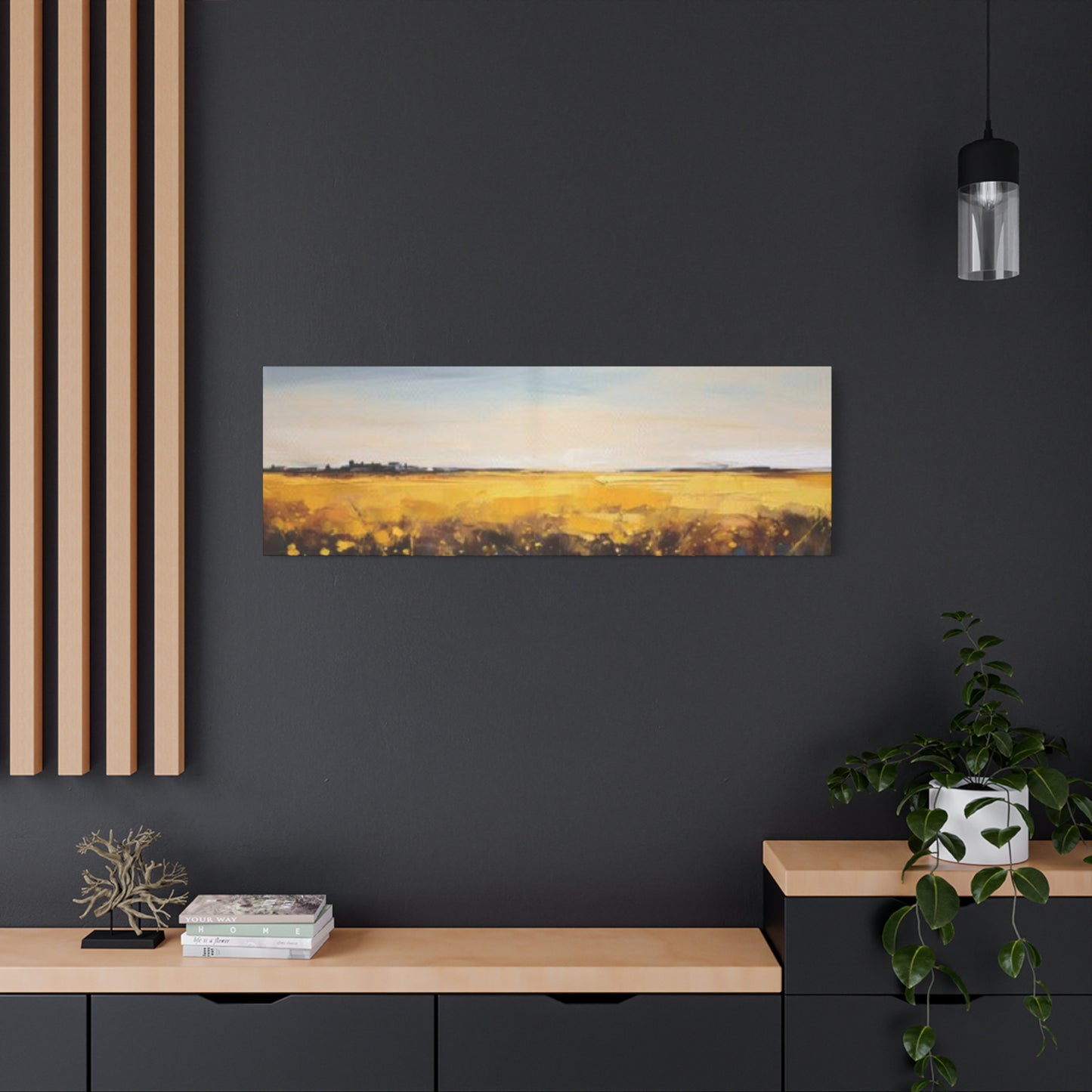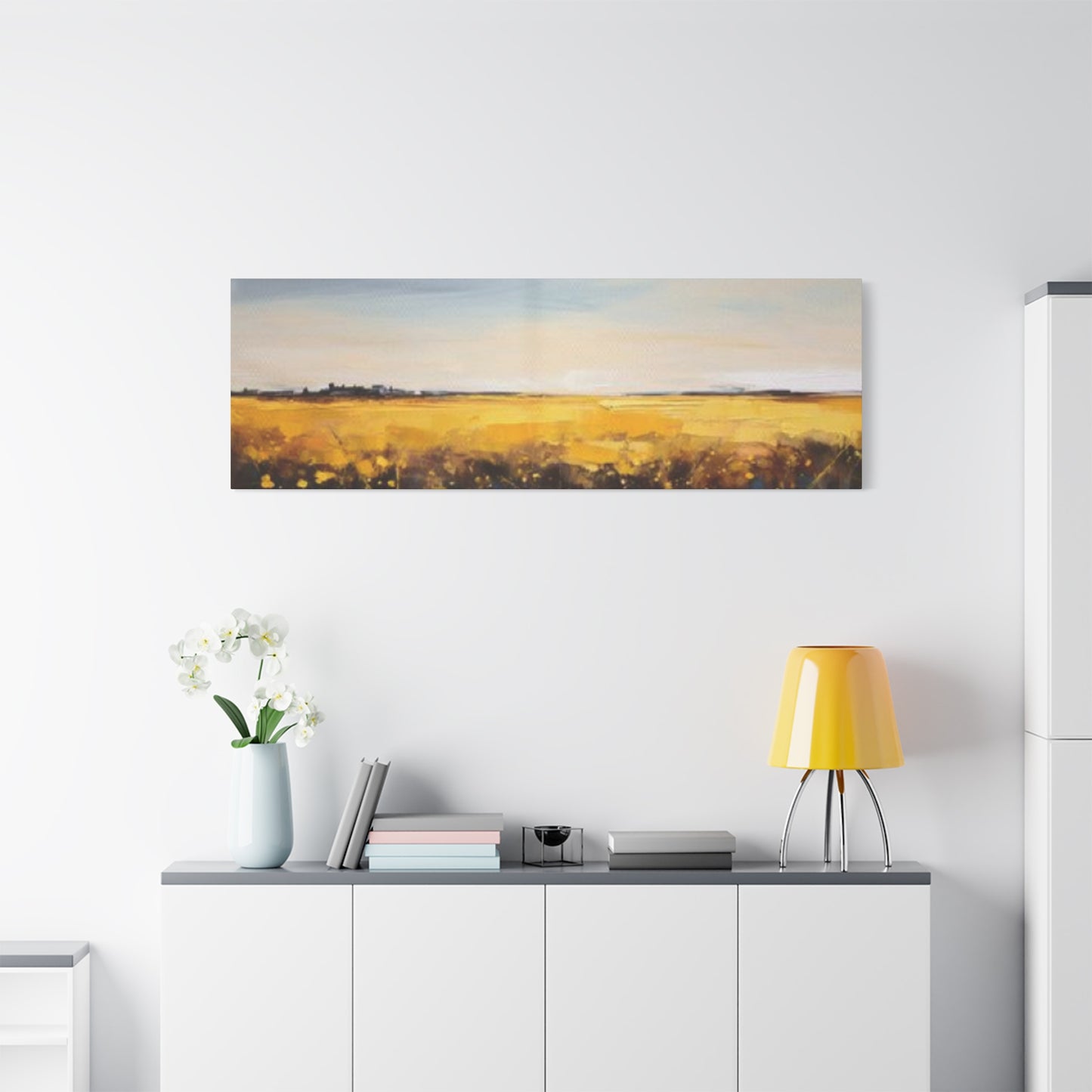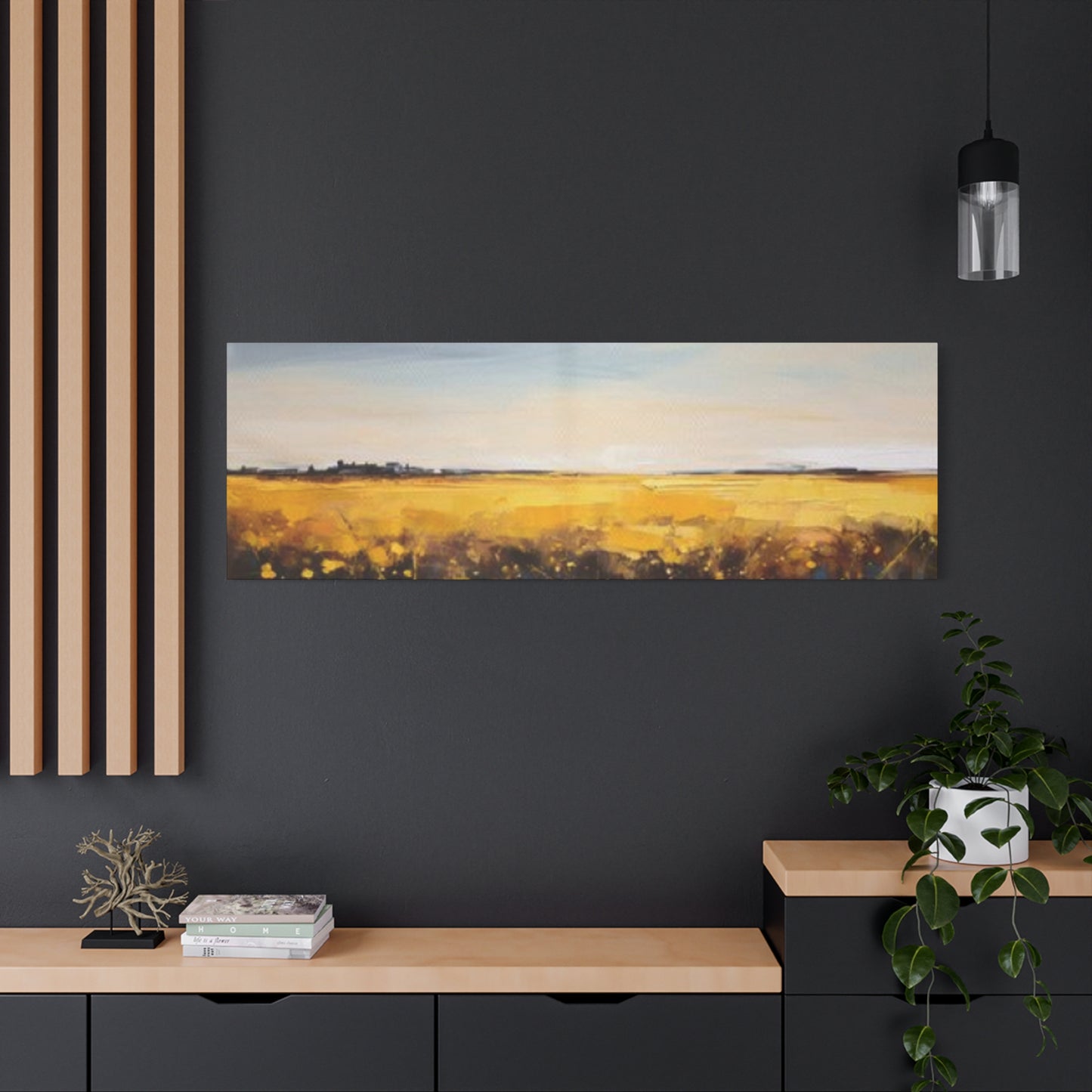Golden Savanna Panoramic Wall Art: A Breathtaking View of African Grasslands
The magnificence of African grasslands has captivated artists and home decorators for generations. These vast golden plains, stretching endlessly under brilliant skies, offer a sense of freedom and natural beauty that translates perfectly into stunning canvas artwork. Golden savanna wall art brings the serene majesty of these landscapes directly into your living areas, creating an atmosphere of warmth and tranquility that few other decorative elements can match.
African grassland canvas pieces showcase the unique character of these remarkable ecosystems. The rolling hills covered in golden grasses create a visual rhythm that flows across the canvas, while the expansive skies above tell stories of changing weather and dramatic light. These artworks capture moments when the sun casts its warm glow across the plains, transforming ordinary grass into shimmering gold that seems to dance in the gentle breeze.
The appeal of savanna-themed artwork lies in its ability to connect viewers with nature's raw beauty. Unlike more cultivated landscapes, grasslands represent untamed wilderness where wildlife roams freely and the horizon seems infinite. This sense of boundless freedom resonates deeply with people seeking to escape the confines of urban living, even if only through the artwork adorning their walls.
Contemporary artists have embraced the challenge of capturing these landscapes, using various techniques to convey the subtle variations in color and texture that make each grassland unique. Some focus on the interplay of light and shadow as clouds drift overhead, while others emphasize the gentle movement of grass in the wind or the dramatic contrast between earth and sky.
The versatility of grassland artwork makes it suitable for numerous decorating styles. Whether your home features modern minimalist elements or embraces rustic charm, golden savanna prints can complement and enhance your existing aesthetic. The natural color palette of these pieces typically includes warm golds, soft browns, and sky blues that harmonize beautifully with most color schemes.
Panoramic Savanna Canvas: Bringing Wide Landscapes Home
Panoramic canvas formats have revolutionized how we experience landscape artwork in our homes. These wide-format pieces mirror the natural experience of viewing grasslands, where the eye naturally sweeps across the horizon, taking in the vast expanse of golden plains. Panoramic savanna canvas art captures this sensation perfectly, allowing viewers to feel immersed in the landscape rather than simply observing it.
The technical aspects of creating panoramic grassland art require careful consideration of composition and visual flow. Artists must balance the various elements within the elongated frame, ensuring that the viewer's eye moves naturally from one side to the other while maintaining interest throughout the entire width of the piece. This often involves strategic placement of subtle variations in the grassland terrain, such as gentle hills, scattered trees, or distant wildlife silhouettes.
Wide-format grassland prints offer unique opportunities for storytelling within a single frame. The extended canvas allows artists to depict the progression of a landscape from foreground to distant horizon, creating layers of depth that draw viewers into the scene. Morning mist rising from distant valleys, the gradual change from golden grass to blue sky, and the subtle shifts in vegetation across the plains all contribute to a rich narrative that unfolds across the panoramic format.
Installation considerations for panoramic savanna artwork require thoughtful planning. These pieces work best on walls with sufficient length to accommodate their proportions without appearing cramped. The ideal viewing distance allows the eye to take in the entire composition while still appreciating fine details. Many homeowners find that panoramic grassland art works exceptionally well above sofas, beds, or in hallways where the extended format complements the architectural lines of the room.
The impact of panoramic savanna canvas extends beyond mere decoration. These pieces can visually expand smaller rooms by creating the illusion of greater width and depth. The horizontal emphasis of the format draws the eye outward, making walls appear to recede and giving the impression of more generous proportions. This effect is particularly pronounced when the artwork features distant horizons and expansive skies.
Modern printing technologies have made high-quality panoramic grassland art more accessible than ever before. Advanced digital printing techniques can reproduce the subtle gradations of color and texture that characterize these landscapes, ensuring that reproductions maintain the visual impact of original paintings. The use of archival inks and quality canvas materials means that these pieces will maintain their beauty for many years.
Wide Golden Grassland Views: Capturing Endless Horizons
The concept of endless horizons holds a special place in human imagination, representing possibility, freedom, and the unknown. Wide golden grassland views embody this concept perfectly, presenting landscapes where the earth seems to stretch infinitely in all directions. These vistas challenge our perception of boundaries and invite contemplation of our place within the natural world.
Capturing the essence of wide grassland views requires artists to master the subtle art of atmospheric perspective. As the eye travels across the canvas toward the distant horizon, colors become softer, details fade, and the interplay of light and atmosphere creates a sense of immense distance. This technique, perfected by landscape painters over centuries, remains crucial for creating convincing grassland artwork that truly conveys the scale and majesty of these environments.
The emotional impact of wide grassland imagery stems from its ability to evoke feelings of peace and expansiveness. Unlike cluttered urban scenes or dense forest landscapes, grasslands offer visual rest through their simplified compositions and harmonious color palettes. The gentle undulation of grass-covered hills creates a soothing rhythm that many viewers find meditative and calming.
Seasonal variations in grassland appearance provide artists with rich material for creating diverse collections of wide-view artwork. Spring grasslands burst with fresh green growth and wildflower blooms, while summer brings the golden hues that have become synonymous with savanna imagery. Autumn grasslands display warm amber and bronze tones, and winter scenes reveal the structural beauty of dormant grasses against stark skies.
The challenge of composing wide grassland views lies in creating visual interest across an expansive, relatively uniform landscape. Successful artists employ various techniques to achieve this, including the strategic placement of lone trees, distant animal silhouettes, or subtle variations in grass height and density. Cloud formations play a crucial role, adding drama and movement to otherwise static scenes.
Wildlife elements, while often minimal in grassland artwork, can provide important focal points and scale references. A distant herd of grazing animals or a soaring bird can help viewers understand the immense scale of the landscape while adding narrative interest to the composition. These elements must be integrated thoughtfully to enhance rather than dominate the overall sense of expansiveness.
The technical execution of wide grassland views demands careful attention to color harmony and tonal relationships. The challenge lies in maintaining visual unity across the broad canvas while incorporating enough variation to sustain interest. Successful pieces often feature subtle gradations in both color temperature and value, creating a sense of depth and atmosphere that draws viewers into the scene.
Endless Plains Wall Art: The Psychology of Open Landscapes
The psychological impact of endless plains imagery extends far beyond simple aesthetic appreciation. These landscapes tap into fundamental human responses to open environments, triggering feelings of freedom, possibility, and connection to nature that have deep evolutionary roots. Understanding these psychological effects can help explain why grassland wall art resonates so powerfully with viewers and why it has become increasingly popular in contemporary home decoration.
Research in environmental psychology suggests that exposure to natural landscapes, even through artwork, can have measurable effects on stress reduction and mental well-being. The simplified compositions and harmonious colors typical of plains imagery create what researchers call "soft fascination" - a gentle engagement of attention that allows the mind to rest and restore itself. This effect is particularly pronounced with grassland scenes, which lack the complexity and potential threat cues found in other natural environments.
The sense of scale conveyed by endless plains artwork plays a crucial role in its psychological impact. These expansive vistas can help viewers gain perspective on their daily concerns, providing a visual reminder of the vast world beyond immediate surroundings. This shift in perspective often promotes feelings of calm and reflection, making plains artwork particularly valuable in bedrooms, meditation areas, or other retreat-like environments within the home.
Cultural associations with grasslands vary across different societies, but certain themes appear consistently across human cultures. Plains are often associated with concepts of homeland, journey, and pastoral life. These archetypal associations can evoke powerful emotional responses, connecting viewers to shared human experiences of migration, settlement, and relationship with the land.
The color psychology of typical grassland artwork further enhances its positive psychological effects. The warm golds and soft browns commonly found in these pieces are associated with feelings of comfort, security, and earthiness. Blue skies contribute associations with peace and infinity, while the overall warm color palette can create a sense of coziness and welcome in home environments.
Seasonal representations in plains artwork can also influence mood and psychological response. Golden autumn grasslands might evoke feelings of harvest, abundance, and preparation for rest, while spring scenes suggest renewal and growth. These seasonal associations can be consciously employed in home decoration to support desired emotional atmospheres or to counterbalance the psychological effects of actual seasonal changes.
The minimalist aesthetic often found in plains artwork aligns with contemporary preferences for simplified, uncluttered visual environments. In an increasingly complex and overstimulated world, the visual rest provided by grassland scenes offers psychological relief. This quality makes such artwork particularly effective in spaces designed for relaxation, concentration, or social gathering.
Golden Prairie Landscape Art: Warmth and Serenity in Every Brushstroke
The artistic tradition of prairie landscape painting has evolved significantly from its early documentary origins to become a sophisticated means of expressing the subtle beauty and emotional resonance of grassland environments. Golden prairie landscape art represents the culmination of this artistic evolution, combining technical mastery with deep appreciation for the unique aesthetic qualities of these remarkable ecosystems.
The development of prairie landscape as a legitimate artistic subject paralleled the settlement and cultivation of grassland regions around the world. Early artists often approached these landscapes with the goal of documenting unfamiliar terrain, but gradually developed appreciation for the subtle beauty and complex ecological relationships that characterize healthy grassland systems. This shift from documentation to interpretation marks the emergence of prairie landscape as true artistic expression.
Contemporary artists working in the prairie landscape tradition draw upon a rich heritage of techniques and approaches while bringing fresh perspectives to this enduring subject matter. Some emphasize the play of light across grass surfaces, creating almost abstract compositions that celebrate color and texture over narrative content. Others focus on the interaction between sky and land, using the grassland foreground as a platform for exploring atmospheric effects and weather phenomena.
The technical challenges of painting prairie landscapes require artists to develop specialized skills in color mixing, brushwork, and compositional design. Capturing the movement of grass in wind demands understanding of natural forms and the ability to suggest motion through static paint application. The subtle color variations within apparently uniform grass masses require keen observation and the ability to translate nuanced natural colors into pigment mixtures.
Brushwork techniques specific to grassland painting have evolved to address the unique requirements of depicting grass textures and movement. Some artists employ vertical brush strokes to suggest upright grass blades, while others use horizontal techniques to convey the flow of grass in wind. The most successful prairie painters often combine multiple brushwork approaches within single compositions, creating rich textural surfaces that reward close examination.
The emotional content of golden prairie artwork stems partly from the inherent characteristics of the subject matter and partly from the artist's personal response to grassland environments. Many prairie painters describe a meditative quality in the process of observing and depicting these landscapes. The subtle variations in color and form require sustained attention and careful observation, creating a contemplative state of mind that often translates into the finished artwork.
Color relationships in prairie landscape art require sophisticated understanding of natural light effects and atmospheric conditions. The golden hour lighting that characterizes much popular grassland artwork presents particular challenges and opportunities. Artists must balance the warm illumination of grass surfaces with the cooler tones of shadows and sky, creating harmonious compositions that maintain both visual unity and dynamic contrast.
Expansive Savanna Prints: Modern Interpretations of Ancient Landscapes
The translation of ancient savanna landscapes into modern print media represents a fascinating intersection of traditional artistic subjects and contemporary reproductive technologies. Expansive savanna prints make the beauty of these timeless landscapes accessible to modern audiences while maintaining the emotional impact and visual appeal of original artwork. This democratization of landscape art has contributed to the growing popularity of grassland imagery in contemporary home decoration.
Digital printing technologies have revolutionized the reproduction of landscape artwork, allowing for unprecedented accuracy in color reproduction and detail preservation. High-resolution scanning and printing processes can capture subtle gradations in grass textures and atmospheric effects that were previously lost in traditional reproductive methods. This technological advancement means that expansive savanna prints can deliver much of the visual impact of original paintings at a fraction of the cost.
The selection and preparation of images for print reproduction requires careful consideration of how different artistic techniques will translate through the printing process. Watercolor paintings with their transparent layers and soft edges often reproduce beautifully, maintaining much of their original delicacy and atmospheric quality. Oil paintings present different challenges and opportunities, with their rich colors and textural surfaces requiring specific printing approaches to maintain visual impact.
Quality control in savanna print production involves multiple factors beyond simple color accuracy. The choice of printing substrate affects how the image appears and feels, with canvas prints offering texture and visual weight that paper prints cannot match. Protective coatings and UV-resistant inks ensure that prints maintain their appearance over time, preventing the fading and color shifts that can occur with inferior materials.
The sizing of expansive savanna prints requires careful consideration of both the original artwork proportions and the intended installation environment. Large-format prints can create dramatic focal points in spacious rooms, while smaller versions of the same images work effectively in more intimate settings. The scalability of digital printing allows for this flexibility while maintaining image quality across different sizes.
Installation and framing options for savanna prints have expanded considerably with advances in mounting and display technologies. Gallery-wrap canvas prints eliminate the need for traditional framing while creating a contemporary, museum-like presentation. Alternative mounting systems allow for easy changing of artwork, making it practical to rotate seasonal or thematic collections of grassland images.
The environmental considerations of print production have become increasingly important as awareness of ecological impact grows. Many print producers now offer eco-friendly options including sustainable substrates, water-based inks, and carbon-neutral shipping. These considerations are particularly relevant for nature-themed artwork, where the subject matter itself celebrates environmental beauty and conservation.
Nature's Gold on Canvas: The Art of Capturing Natural Light
The phenomenon of natural light transforming grassland landscapes into golden tapestries represents one of nature's most compelling visual spectacles. Capturing this transformation on canvas requires both technical skill and deep understanding of how light interacts with natural forms. Artists who specialize in depicting nature's golden moments must master the complex relationships between illumination, color, and atmospheric conditions that create these magical scenes.
The quality of light in grassland environments varies dramatically throughout the day, creating distinctly different moods and visual effects. Morning light often carries a cooler quality, with dew-moistened grass surfaces creating sparkle and reflection effects. As the day progresses, the warming sun intensifies colors and creates stronger contrast between illuminated and shadowed areas. The golden hour, occurring in the period before sunset, provides the most dramatic lighting effects that have become synonymous with grassland beauty.
Understanding color temperature is crucial for artists attempting to capture natural light effects on canvas. The warm light of late afternoon sun has a distinctly different color cast than the cooler illumination of midday sun. This difference must be reflected not only in the treatment of directly lit surfaces but also in shadow colors and reflected light effects. Successful grassland artists develop sensitivity to these subtle but important color variations.
The interaction between sunlight and grass creates complex visual effects that challenge artists to develop specialized techniques. Individual grass blades can act as tiny light guides, transmitting and reflecting illumination in ways that create an overall luminous quality across the grassland surface. Capturing this effect requires understanding of how to suggest individual elements while maintaining the overall impression of grass masses.
Atmospheric effects play a crucial role in creating the golden appearance that characterizes memorable grassland scenes. Dust particles, moisture in the air, and atmospheric haze all contribute to the scattering and filtering of light that creates the warm, glowing quality associated with golden hour illumination. Artists must learn to suggest these atmospheric conditions through careful manipulation of color and value relationships.
The emotional impact of golden grassland scenes stems partly from universal human responses to certain types of lighting conditions. Warm, golden light is associated with comfort, safety, and natural cycles of rest and renewal. These psychological associations enhance the appeal of artwork that successfully captures these lighting effects, making such pieces particularly effective in creating welcoming, peaceful environments in home settings.
Technical approaches to painting golden light effects have evolved through centuries of landscape painting tradition. Some artists build up warm glazes to create luminous effects, while others use direct painting techniques to capture the immediate impression of golden illumination. The most successful approaches often combine multiple techniques within single compositions, using different methods to address various lighting challenges within the scene.
Stretched Savanna Wall Decor: Creating Dramatic Focal Points
The concept of stretched canvas presentation has transformed how we experience landscape artwork in contemporary home environments. Stretched savanna wall decor eliminates the visual barriers created by traditional frames, allowing the landscape to extend to the very edges of the canvas and create more immersive viewing experiences. This presentation method is particularly effective with grassland subjects, where the sense of endless extension is a crucial component of the artwork's impact.
The technical process of creating stretched canvas presentations requires careful consideration of image composition and edge treatment. Artwork must be designed or selected with sufficient margin area to accommodate the wrapping around canvas edges without losing crucial compositional elements. This requirement influences how artists compose grassland scenes, often emphasizing horizontal flow and minimizing important details near image borders.
Gallery-wrapped canvas construction provides a contemporary, professional appearance that complements modern home decoration styles. The visible canvas edges become part of the overall aesthetic presentation, requiring attention to color and pattern continuation that enhances rather than detracts from the main image. Quality construction techniques ensure that the canvas remains taut and properly aligned over time, maintaining the professional appearance of the installation.
The visual impact of stretched savanna presentations differs significantly from traditionally framed artwork. Without the boundary definition provided by frames, the landscape appears to extend beyond its physical limits, creating a window-like effect that can make rooms appear larger and more connected to natural environments. This illusion is particularly pronounced with grassland subjects, where the horizontal emphasis and distant horizons naturally encourage this expansive feeling.
Installation considerations for stretched canvas artwork require different approaches than traditional framed pieces. The absence of frames means that wall color and texture become more prominent in the overall visual composition. Neutral wall colors typically work best, allowing the artwork to dominate without competing visual elements. Proper lighting becomes even more crucial, as there are no frame shadows to conceal edge illumination issues.
Size selection for stretched savanna presentations involves balancing visual impact with practical installation requirements. Large-format pieces create dramatic focal points that can define entire room aesthetics, while smaller stretched canvases work effectively in grouped arrangements or in more intimate room settings. The proportional relationship between artwork size and room scale becomes more critical without frames to provide visual transition between art and architecture.
The durability and maintenance requirements of stretched canvas presentations differ from framed alternatives. Direct exposure of canvas edges requires more careful handling during installation and cleaning. However, the elimination of glass or acrylic glazing makes the artwork more accessible for viewing and reduces reflection issues that can interfere with appreciation of subtle atmospheric effects common in grassland imagery.
Golden Horizon Wall Art: Where Earth Meets Sky
The horizon line represents one of the most fundamental elements in landscape composition, serving as the dividing line between earth and sky while creating the foundation for all other compositional relationships within the image. Golden horizon wall art celebrates this crucial landscape element, often positioning it as both a visual anchor and a symbolic representation of limitless possibility. The treatment of horizons in grassland artwork requires careful consideration of both technical and aesthetic factors.
The placement of horizon lines within landscape compositions dramatically affects the emotional impact and visual balance of the resulting artwork. Low horizon placements emphasize sky and atmospheric effects, creating compositions that feel open and expansive. High horizon positions focus attention on foreground grassland details and can create more intimate, grounded feelings. The most effective golden horizon artworks often experiment with horizon placement to achieve specific emotional and aesthetic goals.
Atmospheric perspective plays a crucial role in creating convincing horizon effects in grassland artwork. The gradual lightening and cooling of colors as they approach the horizon line helps establish the sense of immense distance that characterizes successful grassland compositions. This effect requires careful observation of natural atmospheric conditions and skilled manipulation of color temperature and value relationships.
The interaction between grassland and sky at the horizon creates unique challenges and opportunities for artists. Unlike mountainous or forested landscapes with distinct silhouettes, grassland horizons often feature gentle, undulating profiles that merge subtly with atmospheric effects. Capturing this soft transition requires techniques that can suggest form and distance without harsh linear definition.
Lighting effects at the horizon are particularly dramatic in grassland environments, where unobstructed views allow viewers to observe the full range of atmospheric illumination phenomena. Backlighting effects, where the sun sits near or on the horizon, create silhouette effects and rim lighting that can transform ordinary grass forms into striking visual elements. These effects require specialized techniques to capture convincingly on canvas.
The symbolic and emotional content of horizon imagery extends beyond pure aesthetic considerations. Horizons represent boundaries between the known and unknown, the immediate and the distant, the terrestrial and the celestial. These symbolic associations can add depth and meaning to grassland artwork, creating pieces that engage viewers on multiple levels beyond simple visual appreciation.
Color relationships at the horizon line often represent the most complex challenges in grassland painting. The subtle gradations from warm earth tones through atmospheric middle tones to sky colors must be handled with great sensitivity to maintain both naturalistic appearance and artistic coherence. Many artists consider the horizon area the most critical part of their grassland compositions, requiring the greatest skill and attention to achieve success.
Panorama of the Wild: Untamed Landscapes in Art
The concept of wilderness panorama encompasses more than simple landscape documentation; it represents an artistic attempt to capture the essence of untamed natural environments and convey their power to contemporary audiences. Panorama of the wild artwork seeks to preserve and celebrate landscapes that remain largely unmodified by human intervention, serving as windows into ecological systems that represent our planet's natural heritage.
The challenge of depicting truly wild landscapes lies in conveying their essential character without romanticizing or domesticating their appearance. Wild grasslands possess subtle but distinctive characteristics that differentiate them from managed or agricultural landscapes. Native grass species, natural grazing patterns, seasonal burn effects, and undisturbed soil relationships all contribute to visual qualities that trained observers can recognize but that require artistic sensitivity to capture effectively.
Wildlife integration in wild panorama artwork must balance accuracy with artistic effectiveness. The presence of native animals is crucial for establishing the wild character of grassland scenes, but these elements must be incorporated without overwhelming the landscape focus of the composition. Distant herds, soaring raptors, or subtle tracks and trails can suggest wildlife presence while maintaining the expansive character that defines panoramic presentations.
The seasonal dynamics of wild grasslands provide rich source material for panoramic artwork series. Spring scenes might emphasize the fresh green growth and wildflower blooms that characterize healthy grassland systems. Summer presentations could focus on the golden maturity of native grasses, while autumn scenes might capture the warm tones and seed dispersal activity that prepares these systems for renewal. Winter panoramas reveal the structural beauty and resilience of grassland communities in their dormant phase.
Conservation messaging often underlies contemporary wild panorama artwork, with artists using their work to raise awareness about threatened grassland ecosystems and the importance of preservation efforts. This advocacy aspect adds depth and urgency to the artwork while maintaining its aesthetic and decorative value. The challenge lies in conveying conservation messages without compromising artistic integrity or overwhelming decorative applications.
The scale relationships depicted in wild panorama artwork must accurately convey the immensity of natural grassland systems. These landscapes often extend beyond individual property boundaries and encompass ecosystem-scale relationships that cannot be appreciated from ground level perspectives. Aerial viewpoints and elevated vantage points become important tools for artists seeking to capture the true scope and character of wild grassland environments.
Technical approaches to wild panorama creation often emphasize naturalistic representation over stylistic interpretation, reflecting the documentary aspects of this artistic tradition. However, the most successful pieces transcend mere documentation through skilled use of composition, color, and atmospheric effects that heighten the emotional impact of the wilderness experience.
Golden Savannah Wall Scene: Bringing African Majesty Home
The distinctive character of African savannahs has captured human imagination for generations, representing some of the world's most iconic and biologically diverse grassland ecosystems. Golden savannah wall scenes attempt to capture not just the visual beauty of these landscapes but also their cultural significance and ecological importance. These artworks serve as ambassadors for African natural heritage while providing stunning decorative elements for contemporary homes.
African savannahs differ from other grassland systems in their characteristic tree patterns, distinctive wildlife communities, and unique seasonal rhythms. The scattered acacia trees that dot many savannah landscapes create compositional anchor points that add vertical interest to otherwise horizontal compositions. These trees also provide scale references that help viewers appreciate the immensity of the grassland expanses surrounding them.
The seasonal patterns of African savannahs create dramatic changes in landscape appearance that provide rich material for artistic interpretation. The transition from dry season brown to wet season green represents one of nature's most dramatic transformations, occurring across vast geographical areas within relatively short time periods. Artists often focus on specific moments within these seasonal cycles, capturing the landscape at peak color intensity or during transitional periods that reveal multiple seasonal characteristics simultaneously.
Wildlife elements are almost essential components of authentic African savannah scenes, as these ecosystems support some of the world's most spectacular animal communities. However, incorporating wildlife into grassland artwork requires careful balance to maintain landscape focus while acknowledging the ecological relationships that define these systems. Distant herds, scattered birds, or subtle animal trails can suggest wildlife presence without dominating the composition.
The lighting conditions of African savannahs are often characterized by intense clarity and dramatic contrast that creates exceptional opportunities for artistic expression. The equatorial sun produces sharp shadows and brilliant highlights that can transform grassland scenes into striking visual compositions. The famous African sunsets, with their warm colors and dramatic sky effects, have become iconic elements of savannah imagery.
Cultural sensitivity considerations are important when creating and selecting African savannah artwork, particularly for artists and consumers from other cultural backgrounds. Respectful representation requires understanding of the cultural significance of these landscapes to indigenous communities and avoiding stereotypical or romanticized portrayals that misrepresent African environmental and cultural realities.
The conservation context of African savannah artwork adds layers of meaning and urgency to these decorative pieces. Many of the ecosystems depicted are under pressure from agricultural conversion, climate change, and other human impacts. Artwork that celebrates these landscapes can serve as advocacy for their preservation while providing beauty and inspiration in home environments.
Savanna at Golden Hour: The Magic of Perfect Light
The phenomenon of golden hour illumination represents one of nature's most reliably spectacular displays, transforming ordinary landscapes into scenes of extraordinary beauty and drama. Savanna at golden hour artwork captures these magical moments when the sun's warm, angled light sets grasslands ablaze with color and creates the atmospheric effects that define memorable landscape experiences. Understanding and depicting these lighting conditions requires both technical skill and deep appreciation for the natural phenomena involved.
The physics of golden hour illumination involves the scattering of sunlight through atmospheric particles, which filters out cooler blue wavelengths and emphasizes warmer red and orange tones. This natural color filtration creates the warm, honey-colored light that characterizes golden hour effects. In grassland environments, this warm light interacts with grass surfaces to create luminous effects that seem to emanate from within the vegetation itself.
The duration and intensity of golden hour effects vary with geographical location, season, and atmospheric conditions, providing artists with a range of natural lighting scenarios to observe and interpret. Near the equator, golden hour periods are relatively brief but intense, while higher latitudes experience longer but more subtle golden hour effects. These variations influence the character and intensity of lighting effects that artists attempt to capture in their work.
Capturing golden hour effects on canvas requires specialized techniques for rendering warm light and its interaction with natural forms. Traditional approaches often involve layering warm glazes over underlying colors to create luminous effects, while contemporary artists might use direct painting techniques to capture the immediate impression of golden illumination. The most successful approaches often combine multiple techniques to address different aspects of the lighting challenge.
The emotional impact of golden hour imagery stems from deep psychological associations with these lighting conditions. Golden hour light is often associated with endings and beginnings, reflection and renewal, creating emotional resonance that extends beyond simple aesthetic appreciation. These associations make golden hour savanna artwork particularly effective in creating contemplative and peaceful environments in home settings.
Compositional considerations for golden hour artwork often emphasize the direction and quality of light as primary organizing elements. Backlighting effects can create dramatic silhouettes and rim lighting, while side lighting reveals texture and form in grass surfaces. The most effective compositions often combine multiple lighting effects within single scenes, creating rich and varied visual experiences.
The challenge of depicting golden hour atmospheric effects requires understanding of how light, moisture, and airborne particles interact to create the luminous quality associated with these conditions. Dust, pollen, and water vapor all contribute to light scattering effects that must be suggested through careful manipulation of color and value relationships. These atmospheric effects are often crucial for creating convincing golden hour representations.
Sunset Over Grasslands: Evening Drama on Canvas
The daily spectacle of sunset over grassland represents one of nature's most accessible yet consistently moving displays of natural beauty. These scenes combine the expansive character of grassland landscapes with the dramatic color and lighting effects of sunset, creating compositions that are both visually spectacular and emotionally resonant. Sunset over grasslands artwork captures these ephemeral moments, preserving their beauty and making them available for ongoing appreciation in home environments.
The progression of sunset colors creates a natural timeline of compositional possibilities for artists. Early sunset periods often feature warm but relatively subdued colors that gradually intensify as the sun approaches the horizon. Peak sunset moments can display brilliant oranges, reds, and purples that create dramatic contrast with grassland silhouettes. Post-sunset periods offer softer colors and more subtle atmospheric effects that can be equally compelling in their quiet beauty.
The interaction between sunset colors and grassland forms creates unique challenges and opportunities for artistic expression. Grass surfaces can act as natural reflectors, picking up and radiating sunset colors in ways that create luminous foreground effects. Backlighting situations can transform individual grass blades and seed heads into delicate silhouettes that add textural interest to simplified compositions.
Cloud formations play crucial roles in sunset over grasslands compositions, often serving as the primary vehicles for displaying color and creating dramatic sky effects. The unobstructed views available in grassland environments allow for full appreciation of cloud formations and their role in sunset displays. Artists must balance attention to sky drama with maintenance of landscape focus in their compositions.
The scale relationships in sunset grassland scenes require careful handling to maintain both realistic proportions and effective visual impact. The vastness of grassland landscapes can minimize the apparent size of dramatic sky effects, while excessive emphasis on sky elements can overwhelm the grassland character of the composition. Successful artists find balance points that honor both elements while creating unified artistic statements.
Seasonal variations in sunset grassland scenes provide ongoing source material for artistic exploration. Spring sunsets might emphasize fresh green growth and wildflower accents, while summer scenes could focus on golden grass maturity and seed head details. Autumn sunsets offer opportunities to explore warm color harmonies between grass tones and sky effects, while winter scenes reveal structural beauty in dormant grassland forms.
The temporal nature of sunset effects creates both challenges and opportunities for artists working from life observation. The rapid changes in lighting and color during sunset periods require either quick sketching techniques that capture essential information or photographic reference that preserves specific moments for later studio development. Many successful sunset grassland artists combine both approaches in their working methods.
Golden Glow Landscape Print: Warmth That Transforms Homes
The phenomenon of golden glow in landscape imagery represents more than simple lighting effects; it embodies a quality of warmth and luminosity that can fundamentally transform the character of indoor environments. Golden glow landscape prints bring this transformative quality into homes, creating focal points that radiate warmth and positive energy while connecting living areas with the beauty of natural environments.
The psychological effects of golden glow imagery are well-documented in environmental psychology research. Warm colors and luminous effects trigger responses associated with comfort, security, and well-being. These responses appear to be deeply ingrained in human psychology, possibly reflecting evolutionary adaptations to natural lighting cycles and their relationship to safety and sustenance in natural environments.
The production of high-quality golden glow prints requires careful attention to color reproduction and tonal relationships that preserve the luminous quality of original artwork. Standard printing processes can flatten the subtle gradations and warm color relationships that create glow effects, requiring specialized techniques and materials to maintain visual impact. Premium printing processes often involve multiple ink layers and specialized substrates that can support the complex color relationships necessary for effective glow reproduction.
The selection of appropriate imagery for golden glow treatments involves identifying compositions and lighting conditions that can support luminous effects without appearing artificially enhanced. Natural golden hour lighting, atmospheric effects, and warm color palettes provide the foundation for effective glow treatments, while forced or excessive enhancement can create artificial appearances that undermine the naturalistic appeal of landscape imagery.
Installation considerations for golden glow prints include lighting design that supports and enhances the luminous qualities of the artwork. Proper illumination can reinforce the warm glow effects within the print while avoiding harsh contrasts or color shifts that might compete with the artwork's internal lighting relationships. Subtle accent lighting often works best, providing enough illumination for comfortable viewing without overwhelming the print's inherent luminosity.
The versatility of golden glow landscape prints makes them effective in various home environments and decorating styles. Traditional settings can benefit from the warm, comfortable associations of golden imagery, while contemporary homes can use these prints to soften minimalist aesthetics and add natural warmth to otherwise cool color schemes. The key lies in selecting prints with appropriate intensity and color relationships for specific applications.
Maintenance and preservation of golden glow prints requires attention to the factors that can diminish their luminous appeal over time. Ultraviolet exposure, moisture, and environmental pollutants can all affect color relationships and reduce the effectiveness of glow effects. Proper framing, appropriate hanging locations, and regular cleaning help preserve the visual impact of these prints over extended periods.
Evening Light on the Plains: Capturing Transitional Beauty
The transitional period between day and night offers some of the most compelling lighting conditions for grassland photography and artwork. Evening light on the plains combines the warm illumination of approaching sunset with the subtle atmospheric effects that characterize this daily transition. These conditions create opportunities for capturing grassland beauty that differs significantly from both the harsh clarity of midday sun and the dramatic intensity of peak sunset moments.
The quality of evening light varies throughout the transition period, creating a natural progression of compositional possibilities. Early evening light often retains much of the clarity and color accuracy of daytime illumination while beginning to take on the warmer character that will intensify as sunset approaches. This combination allows for detailed rendering of grassland textures and forms while introducing the emotional warmth associated with golden hour effects.
The directional characteristics of evening light create distinctive patterns of illumination and shadow across grassland landscapes. Low sun angles produce long shadows that reveal subtle topographical variations and add dimensional depth to otherwise flat-appearing terrain. These shadow patterns can become important compositional elements, creating leading lines and areas of contrast that guide viewer attention through the landscape composition.
Atmospheric effects during evening hours often include subtle moisture accumulation, dust suspension, and temperature inversions that create distinctive visual characteristics. These effects can produce soft haze layers, enhanced color saturation, and gentle diffusion of light that contributes to the peaceful character often associated with evening grassland scenes. Capturing these atmospheric qualities requires sensitivity to subtle color and value relationships.
Conclusion
Golden Savanna panoramic wall art captures the breathtaking beauty and vastness of the African grasslands, offering a stunning visual escape right within your home. This expansive artwork beautifully blends warm golden hues with the natural landscape’s rich textures, creating an immersive experience that transports viewers to the heart of the savanna. The panoramic format enhances the sense of openness and tranquility, making it an ideal statement piece for any room seeking to evoke nature’s grandeur.
Incorporating golden savanna wall art into your décor introduces a harmonious balance between nature and sophistication. The rich gold tones not only reflect the sun-drenched landscapes but also add a luxurious touch that elevates the overall ambiance. This combination of organic beauty and elegant design allows the artwork to complement a variety of interior styles—from rustic and bohemian to contemporary and modern.
Beyond its aesthetic appeal, the savanna scene evokes feelings of freedom, adventure, and connection to the earth. It reminds us of the delicate balance within ecosystems and the serene rhythm of wildlife in their natural habitat. Such symbolism adds depth and meaning to your living space, creating a calming and inspiring environment.
Ultimately, golden savanna panoramic wall art is more than just decoration—it’s an invitation to experience the majesty and tranquility of the African grasslands every day. By bringing this breathtaking view into your home, you create a sanctuary that celebrates the beauty of nature while reflecting your appreciation for art and culture. It’s a timeless piece that adds both character and elegance to your space.













